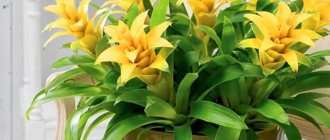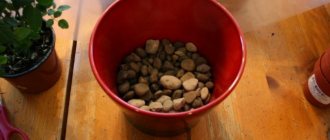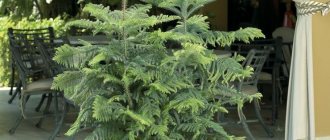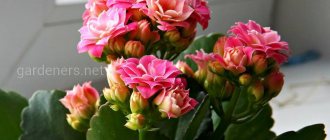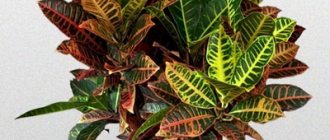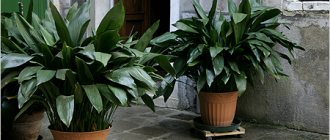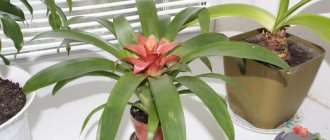The bromeliad family is amazing in all its manifestations. It is impossible to ignore guzman, widespread in the tropical forests of America. At first glance, it seems that fantastic plants have sprouted on trees, hanging vines, and dried snags.
However, the first impression is wrong: guzmania only clings to its roots with its roots, but nutrition occurs through the leaves. More precisely, through a funnel of leaves in the center of the plant: moisture and pieces of dead plants, dust and organic matter fallen from trees during rains accumulate there. This is what the tropical beauty feeds on. Amazing, isn't it? Such plants are called reservoir epiphytes.
Description of Guzmania
The plant has wide, long leaves collected in a rosette. During the flowering period, bracts of bright colors grow - scarlet, burgundy, coral, burgundy, crimson shades. Nature thus got out of the situation by attracting the attention of insects to small, inexpressive white flowers. After flowering, seed pods with many small seeds are formed, which can be used for sowing and obtaining new plants. The roots of Guzmania are underdeveloped and almost do not participate in the nutrition of the flower.
The second interesting fact is that after flowering, guzmania dies, releasing several shoots, or children, before dying. It is the young specimens remaining after the mother bush that are the predominant method of propagation of Guzmania.
Reproduction of Guzmania
Guzmania mainly reproduces by division. During flowering, the mother plant begins to form a “baby” root system, which over time grows into a separate full-fledged bush. By the time the shoot reaches a height of 15 cm and is ready for transplantation, its “parent” has already dried out and died. Usually one guzmania produces one “baby”, although there are rare cases when it continues to grow after flowering and produces more offspring.
Guzmania transplant after purchase
How to transplant Guzmania photo
It is better to immediately transplant the purchased plant into a beautiful, spacious pot with prepared nutritious soil; read more about the composition of the soil below. Transplantation is carried out using the transshipment method: water the soil and leave for several hours until it becomes limp. Afterwards, carefully release the earthen lump from the pot, trying not to disturb its integrity.
Lay out a drainage layer of expanded clay, cover the soil with a layer of several centimeters, install the guzmania vertically, and fill the side space with soil. Water carefully. If the ground has subsided, it is filled up to the original level.
Distinctive features of Guzmania
Looking at the photo of this plant, it is impossible to deny yourself the pleasure of admiring it longer.
The genus Guzmania belongs to the Bromeliacae family, which includes many exotic species. Guzmania was named after the Spanish pharmacist and plant collector Anastasio Guzman. Along with the generally accepted term, the name of the plant “Guzmania” is also used.
In total, the genus includes 215 species and hybrids. In natural conditions, guzmanias live on trees and shrubs. Epiphytes obtain moisture and nutrients through thin thread-like roots. Some species and their varieties are used as ornamental plants. The main producer of hybrids is the Netherlands.
Main characteristics of the Guzmania genus
| Sign | Description |
| Other names | Bromeliad, guzmania. |
| Region of origin | Warm and humid forests of Central and South America. |
| Life form | Perennial herbs, mostly epiphytes, grow on trunks in depressions in the bark, between the branches of trees and shrubs. |
| Height | From 15 to 60 cm. |
| Stem | Absent or greatly shortened. |
| Leaves | Narrow, pointed, mostly leathery, often shiny, forming a dense, cup-shaped rosette. The top ones overlap each other, creating a funnel or “tank” for collecting water. |
| Flowers (“real”) | Located at the end of the peduncle, small, mostly white or light yellow. |
| Bracts | Brightly colored, durable. |
| Coloring of flowers and inflorescences | Orange-golden, red, pink, yellow, purple, violet, lilac, white, cream. |
| At what age does it bloom? | 2–3 years. |
| Flowering period | Late winter, spring or summer depending on the species. Flowering lasts 3–6 months in a row. |
| Peculiarities | Guzmanias bloom only once, after which the inflorescence dries out, the rosette of leaves gradually dies off, leaving vegetative shoots - “babies”. |
| Usage | Beautiful flowering indoor plants for the living room, bedroom and bathroom, for table decoration, as a gift. |
| Toxicity | Contains substances that may cause skin irritation. |
The guzmania leaf funnel in its natural environment accumulates rainwater and condensation. This water is an alternative to obtaining moisture from the soil and provides water for small birds. Guzmania belongs to the reservoir group of plants of the bromeliad family, like Aechmea and Vriesia.
The peduncle grows from the center of the rosette, at the top it is decorated with a “sultan” or “torch” of bracts (modified leaves).
How to care for guzmania at home
Indoor Guzmania flower photo Guzmania at home
Tropical plants are quite comfortable in an apartment; it remains to add a little care so that the green beauties feel no worse than in the wild. To do this, arm yourself with knowledge of simple agricultural technology.
Air temperature and lighting
Considering the light shade of the second tier of the tropical jungle, create similar lighting for your pet. The east and west windows of the apartment will be a great place for guzmania. Northern windows will be uncomfortable due to the low intensity of daylight, while southern windows, on the contrary, will lead to burns or even death of the plant.
The temperature regime is also close to the usual conditions of our summer and winter: in the hot period it is preferably warm 24-25 ° C, in the cold - about 20 ° C.
Fresh air is simply necessary for guzmania, but it must be ventilated carefully, avoiding drafts, otherwise the beauty may get sick or refuse to bloom.
How to water Guzmania
Guzmania watering and fertilizing at home
Anyone can enjoy the watering process: the fascinating action is especially interesting for children. It's no joke, the flower is watered not at the root, but in the center of the leaf rosette!
- Water should be there constantly in hot weather, and in winter it is left for several hours and drained to prevent the development of rot.
- In summer, water daily; in winter, reduce watering to twice a week.
- The soil in the pot should also be slightly moist; do not forget to spray it regularly with a spray bottle.
- By the way, spraying water on the leaves also has a very beneficial effect on the condition of the plant. It’s good to give the beauty a shower in the bathroom at least once a week, washing off the dust from the leaves. Refreshing procedures can transform guzmania, stimulating active growth and flowering.
- When you notice a peduncle emerging, be careful with watering: water should not get on it, and it is better not to leave water in the funnel, watering the plant through a tray into which small stones or pebbles are placed.
An excellent way to maintain high air humidity around the flower (about 85%) is to plant moss on the surface of the ground in a pot. Moss evaporates moisture perfectly, creating a favorable microclimate.
How to feed Guzmania
In spring and summer, during the period of active growth, guzmania is regularly fed with fertilizers for orchids. To do this, prepare a solution according to the instructions and pour it into the outlet through which the plant is fed. The frequency of feeding is once every two to three weeks.
Additional nutrition promotes the active development of leaves and stimulates flowering and the growth of more side shoots.
Guzmania during flowering
Guzmania bloomed: how to care for photo
We have to wait two to three years for this miracle. However, the gardener’s patience is fully rewarded: guzmania blooms for several months, delighting with the splendor of its colors. The enchanting action ends with the death of the flower, which leaves behind young shoots - babies that should be used to produce new plants.
Care during flowering comes down to careful watering through a tray, without stagnating water in the ground. It would also be a good idea to feed, but at the root, so that water that gets into the outlet does not provoke the development of rot.
However, many gardeners continue to water the flower directly into the outlet without fear of disease. There is also a rational grain here: in natural conditions, rain does not ask whether guzmania is blooming...
Guzmania has faded, what to do next?
Bromeliads are amazing plants, but nevertheless do not require much effort in caring for them. The only thing a gardener needs is good patience. You can cut off the peduncle if you don’t need the seeds, and continue caring for the guzmania as usual: water it in a funnel, continue feeding it. When the kids grow up well, water them too, not forgetting to feed them.
Gradually, the mother plant will begin to dry out and die, but do not rush to separate the young shoots. Let them gain strength and grow their own roots. When the children begin to match the old bush, it’s time to start planting the guzmania.
By the way! You can not plant the guzmania, but leave the children in the same pot. The dead plant is carefully cut off, and the usual care for young offspring is continued. Under favorable conditions they will bloom next season.
Guzmania flowering
Well, the flowering period is the most difficult aspect of caring for Guzmania. As a rule, flowers form only after 3-5 years of plant life. It lasts for several months, and this is the culmination of the life of a beautiful plant.
But flowers can appear only if the guzmania is comfortable in the conditions around it. If the long-awaited moment never comes, then the problem may be:
- Lack of light or, conversely, aggressive exposure to direct sunlight;
- Lack of fertilizers and nutrients; Dry air.
There is a little trick to speed up the process of flower appearance. To do this, place apple slices on the soil next to the plant and cover it with a bag. The ethylene released will enter the air and the plant will bloom.
Make sure that the apples and the bag do not start to grow mold, otherwise you will infect the plant.
How to plant Guzmania at home
How to transplant a baby Guzmania photo
For many this is an exciting moment. The beauty lived out its life and gave the gardener new young plants, which must be carefully transplanted into separate pots. There is no need to worry: epiphytes take a long time to take root, but they do not need roots as a source of nutrition! Therefore, rooting takes a long time, but almost always successfully.
Carefully remove the guzmania and babies from the pot. It is better to water the plant a few hours before transplanting so that the soil becomes damp. After this, use your hands or a sharp knife to very carefully divide the bush into separate sections, trying not to damage the roots.
- The children are planted in pre-prepared pots with loose nutritious soil, only slightly moistening it.
- Choose wide, stable, shallow, heavy pots, preferably ceramic: this way the guzmania will not tip over, as in a light plastic container.
- At the bottom of the pot, be sure to lay out drainage from small stones, pebbles or expanded clay, and check for the presence of the required drainage hole.
- After planting the plants, maintain soil moisture by periodically spraying it with a spray bottle.
- To create increased humidity, transplanted plants can be covered with a plastic bag or glass jar.
- After a week, you can resume watering through a leaf funnel.
After two weeks, fertilizing is resumed, which will help the plants recover quickly and stimulate further growth and rooting.
How to transplant Guzmania babies, look at the video:
Stage three, final: planting in new soil
Guzmania, cleared of wet soil and rotten roots, must be planted in fresh soil. It’s a good idea to use bark for this or a special substrate for bromeliad plants, which includes guzmania. It can be purchased at any flower shop.
The pot must have holes to drain excess water, otherwise the plant will rot again and it will no longer be possible to save it.
Land for Guzmania
To plant guzmania, ready-made soil for bromeliads is used; you can also buy soil for orchids.
Those who like to prepare their own soil mixture will enjoy the simple “recipes” given below.
1 soil mixture option
Mix in equal parts:
- Sphagnum moss
- Coarse sand
- Sod land
- Peat
2nd soil mixture option
- Coarse river sand - 1 part
- Crushed pine bark - 1 part
- Forest, leaf soil - 3 parts
Seasonal plant care
Despite the exotic origin of Guzmania, it is not difficult to care for. The main thing is to create the necessary conditions for flowering, providing the usual high temperature and bright light.
However, this does not mean at all that you need to grow the flower in greenhouse conditions. Both temperature and lighting will have to be adjusted.
For example, the plant must be protected from direct sunlight, and at night it is recommended to ensure that the temperature does not drop sharply and remains within normal limits.
Since there is no winter in the tropics, guzmania does not know how to adapt to the conditions that it encounters on the windowsills of Russian flower growers from November to March. Due to the radical dissimilarity of the microclimate, it should be taken into account that the requirements for a comfortable environment for a flower change greatly when the central heating is turned on.
Table: how to create an optimal microclimate in Guzmania depending on the season
| Parameter | Winter | Summer |
| Temperature | Monitor the average daily temperature (20–25°C), avoiding sudden fluctuations and falling below normal. | There is no need for temperature control. The flower tolerates heat easily. |
| Lighting | Can be kept on a south window. It is advisable to use fluorescent or phytolamps, extending daylight hours to at least 10 hours. | Protect from direct sunlight, shading the flower from 12:00 to 15:00. |
| Air humidity | Keep away from heating devices and increase the number of sprays. | Spray with soft water 2-3 times a week. |
| Watering | Watering is moderate, once every 3–4 days. | Water frequently and generously. |
| Feeding | In the fall, reduce feeding by half, and stop completely in winter. | Feed foliar twice a month. |
Growing guzmania from seeds
Guzmania seeds photo
Before sowing, it is good to soak the seeds in a pink solution of potassium permanganate for 10-15 minutes and dry until they flow. The procedure is a prevention of rot and other diseases.
- Scatter Guzmania seeds as little as possible on the surface of the ground and press with your palm.
- The soil for planting seeds consists of a mixture of sand and peat in equal parts.
- After sowing, the soil is sprayed with a spray bottle and the container is covered with a plastic bag.
- Maintain high humidity and temperature within 25 °C.
- Three weeks later you will be able to see the seedlings, you will definitely need to ventilate, and later remove the shelter completely so that the plants do not get sick.
- For about a month, green seedlings will grow and will need to be picked into separate cups. It is better to take larger containers, approximately 7 cm in diameter, to give more space to young seedlings.
In the future, care is similar to care for adult plants. When the plants grow up, they are simply transplanted into permanent pots using the transfer method. After two to three years, flowering can be expected.
General information about the guzmania flower
Guzmanias are heat-loving plants and require a temperature of about 25 degrees Celsius to bloom. These inhabitants of tropical forests grow as epiphytes on trees and also take root in the soil. The plant has bright green or variegated leaves with a solid edge, forming a funnel-shaped rosette that can reach up to 50 centimeters in height and have the same diameter. In the center of the rosette, before flowering, bracted leaves appear, which are brightly colored and stand out against the background of the other leaves.
Some species “throw out” inflorescences on long peduncles. Guzmania home care in which all recommendations have been followed blooms only at the age of 2-3 years. The duration of flowering can be more than 3 months, but after this the mother plant dies. This is a feature of all representatives of bromeliads, which bloom only once in their life, after which they give off side shoots and die.
Mistakes in caring for Guzmania and main problems
Do not be upset if the flower is a little sick or does not please with the bright colors of flowering. It is enough to restore favorable conditions for it.
Why does guzmania not bloom and what to do?
Why doesn't guzmania bloom?
A Tropicana can only go on strike if it is not properly cared for. Check if there is enough light and heat for it, are you flooding it? Perhaps you have never fed it? If, however, the grower is sure that proper care is provided, you can stimulate flowering:
- Place ripe apples or bananas next to the flower, and cover the plant with them with a plastic bag. The ethylene released by the fruits will provoke the release of the peduncle and children.
- Periodically check that the fruits do not have mold or rot and replace them with fresh fruits in a timely manner.
After a month or two, you will definitely achieve flowering. It’s just better to do this in spring or early summer, in accordance with the life cycle of the plant.
Guzmania leaves have wilted
This phenomenon indicates that the water in the outlet has stagnated and the roots have begun to rot. Classic consequences of overflow. Dry your beauty: drain the water from the outlet and tray, stop watering. Only lightly spray the plant and the surface of the soil when it dries.
When the turgor of the leaves is restored, it will be possible to resume watering through the funnel.
Guzmania is not growing
This also happens if the florist hopes that the flower purchased at the garden center already has everything it needs. Unfortunately, the transport soil is not suitable for the constant growth and development of the flower.
The reasons for growth stagnation are simple:
- Lack of nutrition for the flower due to poor soil and lack of feeding through the leaves.
- There is little light, the flower stands on the north window or in the middle of the room.
Feed the tropical beauty, replant it in nutritious soil and give it more light so that it will delight you with active growth!
Remember also that the plant juice is an irritant to the mucous membranes and skin. Therefore, it is better to work with rubber gloves.
Diseases and pests of Guzmania
Like any indoor plant, guzmania can easily be overcome by pests and various diseases. It is very important to respond to the current situation in a timely manner.
Table: dangerous pests of bromeliads
| Pest | Description | Why is it dangerous? | How to fight |
| Shchitovka | A small insect covered with a waxy coating that protects it from environmental influences | Feeds on plant sap |
|
| Mealybug | A small insect resembling a louse, covered with a white coating | Feeds on the juice of young plants, leaves, buds |
|
| Spider mite | An insect 2 mm in size, brown or reddish in color, loves dry air | It feeds on the sap of leaves and entwines the plant with a web, thereby complicating the process of photosynthesis. |
|
| Aphid | The smallest insect, barely visible to the eye, green or brown, creates colonies | Feeds on plant sap |
|
Photo gallery: Guzmania pests
Mealybugs leave a white coating on the leaves, which can cause fungal diseases Spider mites are a very small but dangerous insect Aphids form entire colonies on the plant Scale insects are difficult to remove even with the help of insecticidal preparations
Table: characteristic diseases
| Disease | Cause | Struggle | Prevention |
| Sooty mushroom | Aphids carry this fungal disease + low temperature and excess moisture |
|
|
| Root rot | Excess moisture, heavy, poorly permeable soil | Guzmania roots should not be allowed to rot: they are very fragile and the plant can quickly die. As a rule, the flower cannot be saved. |
|
Photo gallery: Guzmania diseases
Sooty fungus appears on plants infested with pests
Guzmania leaves turn yellow, this may be caused by root rot. Root rot leads to the death of the plant.
Signs and superstitions about Guzmania
People look for hidden meaning in everything, and beliefs about the power of guzmania are no exception. The plant is believed to:
- It is a natural aphrodisiac, supporting male sexual activity. Therefore, it is often placed closer to the bed.
- Taking into account the first property, the beauty is credited with powerful positive energy, the ability to bring happiness to the home, and strengthen family relationships.
- Guzmania brings harmony to the home, improves mood, and promotes mental peace.
This is such a complex flower with many positive properties that you should definitely place on your windowsill. Guzmania symbolizes harmony, happiness, masculine strength and prosperity. In view of the above, it is an excellent gift for any holiday.
Pruning Guzmania
For this indoor plant, only sanitary pruning of dried and diseased leaves is used. The compact flower does not need any other types of pruning.
Trimming methods
Problem leaves are cut off at the base with a sharp knife or pruning shears - as close as possible. If living tissue remains exposed after pruning, the wound is covered with wood ash to disinfect the surface and prevent the entry of pathogenic microbes and fungi.
Types of Guzmania with description and photo
A striking representative of the bromeliad genus, Guzmania has about one hundred and thirty varieties. A whole parade of colorful plants, from which you will have to try to choose the best! Let's look at the most popular types used in indoor floriculture.
Guzmania blood red Guzmania sanguinea
Guzmania blood-red Guzmania sanguinea photo
The bent downward, lanceolate leaves of this plant form a beautiful goblet-shaped rosette. The bracts are bright yellow or red, visible from afar. The exotic is quite large in size: it reaches a height of 20 cm, and the leaf plates reach 5 cm in width and 40 cm in length. The inflorescences are thyroid-shaped, with small flowers up to 12 pieces. Flowering mainly in spring. A striking representative of the species and a common subspecies is Guzmania short-peduncle.
Guzmania musaica
Guzmania mosaic photo
This tropical plant is slightly taller, growing up to half a meter in height. The leaves are up to 80 cm long, they are dotted with frequent transverse stripes of light color against an emerald background. The dense spreading rosette looks very massive. At the base, the leaf blades are painted dark burgundy. The bracts are bright pink, the peduncles are short and erect. The plant blooms in mid-summer with white flowers collected between the yellow sepals of the panicle inflorescence.
Guzmania Donnell-smithii
Guzmania Donnell-smithii photo
Domesticated since the beginning of the 19th century. The leaves of the plant reach 60 cm in length, the height of the beauty is up to 30 cm. Short massive inflorescences no more than 12 cm are quite attractive. Particularly decorative is the rich dark color of the leaves, covered with pale scales. An exotic beauty blooms in spring.
Description of the flower
Guzmania is the Russian version of the name of the plant, derived from the transliteration of the scientific “guzmania”. In the original, the flower is called guzmania, because it was first discovered and described by the Spanish flora and fauna researcher Anastasio Guzman in 1802. There are over 200 species of this evergreen herbaceous plant. At home, the reed Guzmania Minor Rondo is most often grown.
Guzmania belongs to the same family as pineapples - bromeliads. In nature, it is widespread in Brazil, Venezuela, Central America, East India and South Florida. Interestingly, the flower grows both independently on mountain slopes, in forests, and on other plants. It is an epiphyte, meaning it uses trees for anchorage, but does not feed on them.
Guzmania leaves are lanceolate, have a length from 20 to 70 cm and a width of 3-4 cm. They come in a variety of colors: plain green, with a red rim or striped. They are collected in a goblet-shaped rosette, which in the wild is designed to collect food and drink - rainwater, small insects, dust, and the remains of other plants. The flower has a poorly developed root system; its roots are short and small and are more needed for anchoring in the area than for nutrition. Thanks to this, the guzmania can even move a few centimeters to get more light or moisture.
Flowering and reproduction
The guzmania flower is very beautiful; not only amateurs, but also collectors are interested in the plant. A spectacular appearance is given by the bract, which is sometimes mistaken for an inflorescence. Bright red, it is located strictly in the center of the rosette and rushes several tens of centimeters into the air. Less common are yellow, orange, purple and other varieties. But real guzmania flowers are inconspicuous. That is why nature awarded the plant with a bright bract - so that it would attract more bees.
Guzmania blooms only once - mainly in the spring. In this case, the flower lasts for 15-17 weeks, or even longer. Then the peduncle begins to gradually die off. In the end it is cut out as deep as possible. After flowering, babies appear between the leaves of the guzmania, on average 3-4 pieces. After they are sufficiently saturated, the mother plant dies - its mission is completed.
It is believed that a flower always dies after reproduction. This is wrong. With intensive care, it can live for several years and even give birth again. Such cases do occur, although rarely.
